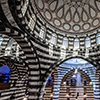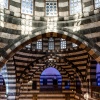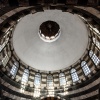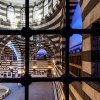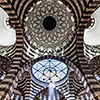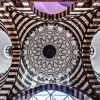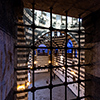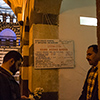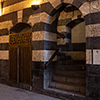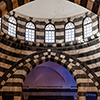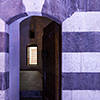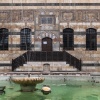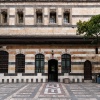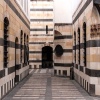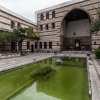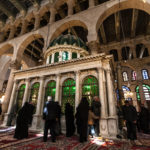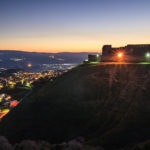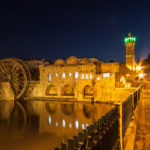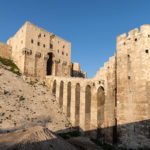More eternal than Rome – Damascus
Striped and domed
The basars (Souqs) are the heart of Damascus old town but there’s not only the strung-out tube of al-Hamidiyah. Being literally around the corner and to the south of Umayyad Mosque, the small lanes of picturesque Suq al-Buziriya invite to have a crawl. There I coincidently bumped into one of the most interesting architectonical buildings whole Damascus has on offer, the Khan As’ad Pasha Azim, an actual caravansary being built by the Ottomans in Damascene black-white style.
The Khan’s playful filigree domes are a borrowing of the Ottoman master builder Sinan. It is made of nine quadratic areas, each being topped with a cupola, except the one in the middle. Each cupola is backed by a massive pillar. Khan As’ad Pasha is the largest Khan in Damascus and served as oriental accommodation to guests of the nearby Azm Palace, then being the official residence of the Ottoman governor Azm Pasha.
While the ground level served as storage room and accommodation for horses and camels, the rooms on the first floor were dedicated to guests. The domes as well as the design with the fountain in the middle of the building were the key that even in hottest summer it remained cool and comfortable inside. In particular the afternoon sunlight illuminates the Khan wonderfully contrasty turning the whole place into being a real part of Stories from One Thousand and One Nights.
The style of changing lines and colours continues at the not far away Azem Palace. The premises got built in 1750 by Ottoman governor As’ad Pasha al-‘Azm and are today an important museum show-casing how oriental- lordly life can be, involving a Madrasa (school), harem as well as hammām (steam bath). Before the Ottomans occupied the place already Umayyad califs as well as Mamluk emirs resided in the very same area as the evidences of the palace of Tingiz testify. Azm Palace is a prime example how Islam-oriental architecture was able to structurally separate the public from the private area.
